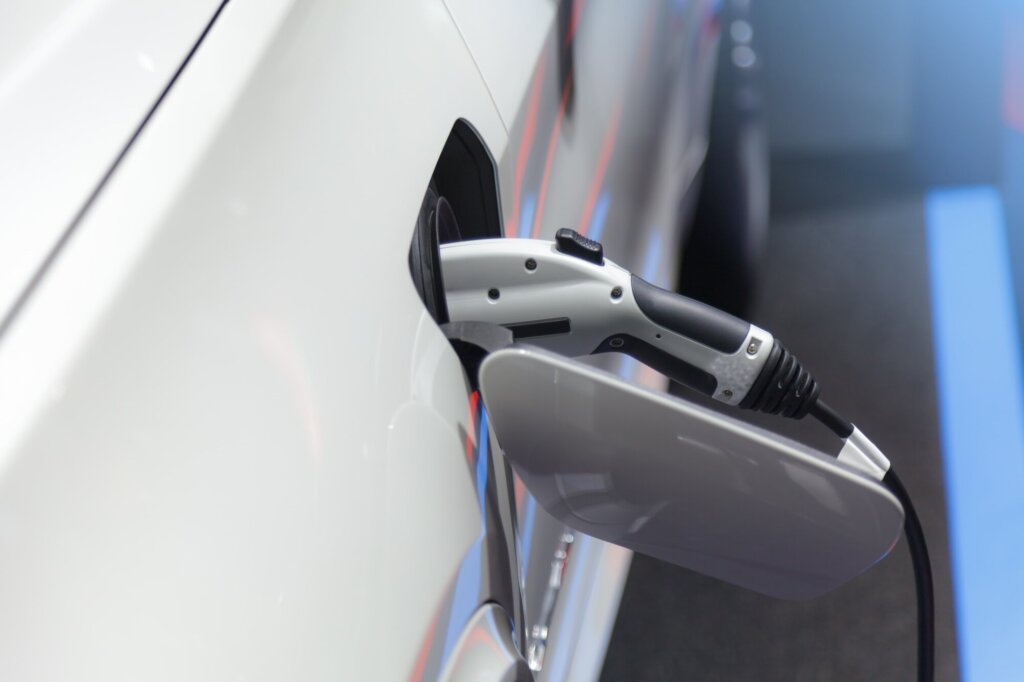New Report Details EV Adoption and Grid Impacts Across Every Province and Territory in an Evolving Landscape

The transition towards zero emission vehicles (ZEVs) is well underway, and while the end point is clear, the pace and shape of this transition remain uncertain. One challenge is determining how utilities will prepare the electric grid and manage new loads from more ZEVs on the road.
To provide decision-makers with robust data points to facilitate this transition, Dunsky and Electric Mobility Canada (EMC) have collaborated to produce a new, comprehensive national report: Powering Up.
Powering Up considers recent policy and market uncertainty to provide stakeholders – including utilities, investors, provincial, federal and municipal policymakers, and automakers – with several key data sets including:
- In-depth modelling of light-duty ZEV uptake and associated potential grid impacts in every province and territory under different policy scenarios to 2040
- Outline of the policy landscape surrounding ZEVs for every province and territory
- New results of national and sub-national surveys on consumer awareness and purchasing intentions
The report provides substantial data with several key takeaways:
- Technology advancements will lead to ZEVs dominating the light-duty vehicle market, achieving 82% market share of new sales by 2040 even in a low-growth scenario.
- Policymakers have a critical opportunity in the next few years to set Canada on a stronger path to vehicle electrification, roughly doubling the cumulative cost-savings and emissions benefits by 2040.
- On average, Canadians will save approximately $1,650 annually per vehicle on fuel, not to mention the benefits from reduced greenhouse gas emissions and improved air quality.
- With effective “managed charging” programs to encourage ZEV charging when there is excess grid capacity, the revenue utilities earn from charging can more than offset the cost of upgrades required to support ZEV adoption.
- The most impactful tools to support the adoption of ZEVs are increasing charging access, increasing local supply, and reducing vehicle purchase costs.

The findings, including adoption forecasts, energy needs and peak charging loads per province and territory, are available as part of an interactive dashboard on EMC’s website.
Additionally, reports and raw data for each province and territory are available for download.
The transition to ZEVs can help secure a clean and resilient future for Canadians. With the right policy and infrastructure mix, it can be done affordably and reliably.
Related Projects
- Read more about Unlocking Vehicle-Grid Integration in Canada
Unlocking Vehicle-Grid Integration in Canada
September 25, 2025
A new report from Dunsky prepared for CSA Group provides a comprehensive look at the Vehicle-Grid Integration (VGI) landscape in…

- Read more about Utility Projects on the Go
Utility Projects on the Go
October 18, 2024
Our team is currently supporting utilities on both coasts (and others in between) with a variety of strategic initiatives. Here…

- Read more about Canada Electricity Advisory Council Delivers Final Report on Achieving Canada’s Clean Electricity Goals
Canada Electricity Advisory Council Delivers Final Report on Achieving Canada’s Clean Electricity Goals
June 17, 2024
The Canada Electricity Advisory Council (CEAC), chaired by Dunsky President Philippe Dunsky, completed its 12-month mandate to examine ways in…
